Buying Guide Bentley Arnage
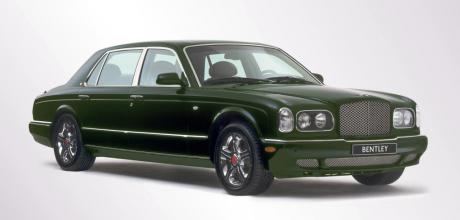
Replacing the Turbo R, the Arnage was caught up in one of the most bizarre buyouts in British industrial history. But that just means there are interesting choices to be made when buying one.
WORDS: WILL HOLMAN
PHOTOGRAPHY: KELSEY ARCHIVE
BUY BENTLEY’S LUXURY BARGAIN
BUYING ADVICE BENTLEY ARNAGE
BUYING GUIDE: BENTLEY ARNAGE
All you need to know to select the best
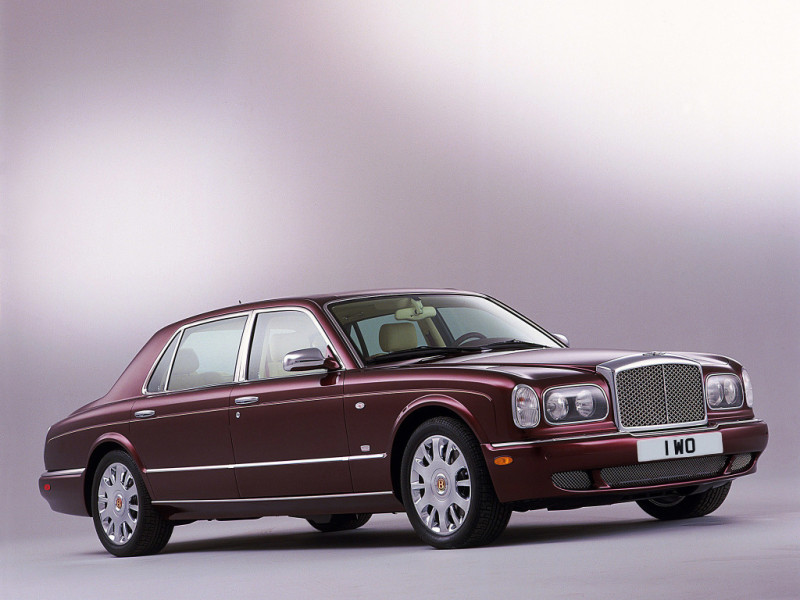
‘...there’s no real price differential between BMW and L Series engine variants, at least for nice low-mileage examples.’
Choice, that’s what we all want these days. A young chap in whizzy glasses running a focus group decided that a few years ago, and choice is certainly what Bentley provided with the Arnage. You could have one with a German engine designed in the 1990s, or an English engine designed in the 1950s. And of course, the earlier cars came with the later engine, and vice-versa. Confused? You should be – but not as confused as Volkswagen, who thought they’d bought Rolls-Royce, only to discover that BMW had – or important bits of it anyway – leaving the Wolfsburg firm building Bentleys with engines built by a rival manufacturer. What a sorry mess. How on earth did we get here? Well…
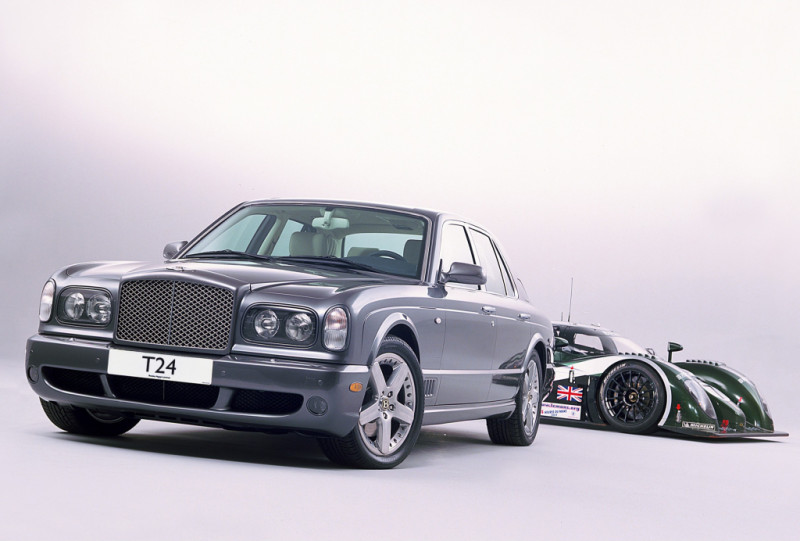
As you’re reading Rolls-Royce and Bentley Driver there’s a very good chance you know this story all too well, but for those new to all this, here’s the potted version. Rolls-Royce Motors owners Vickers decided to sell in 1998, and the leading bidder was German automotive giant, BMW. However, at the eleventh hour BMW’s £340m bid was trounced by VW’s, whose clever money men just transposed the first two digits and offered £430m instead.
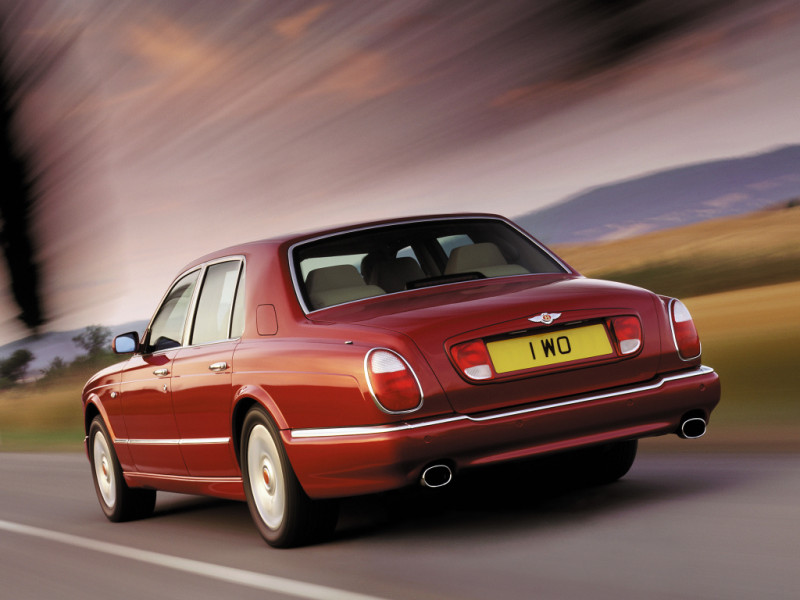
Crafty. But not quite crafty enough, because although the deal included the historic Crewe factory, the famous Spirit of Ecstasy mascot and the instantly recognisable radiator grille shape, VW’s lawyers missed the fact the Rolls-Royce brand name and logo were still under the control of the aero engine manufacturer, which promptly licensed them to BMW for a paltry (everything’s relative) £40m. Eventually the two German firms did a deal that allowed Volkswagen to make Bentleys and BMW to produce Rolls-Royces. The deal included a provision that meant the Arnage could continue to be powered by BMW’s M62 quad-cam V8, with its Cosworth engineered twin-turbo setup for another couple of years, after which the 1950s designed Rolls-Royce L-Series V8 was fitted with one large turbo, just as it had been in the Turbo R.
A final twist of this uniquely farcical deal was that the Arnage was on sale with a choice of either engine for a year, the BMW powered cars gaining the name of Green Label, alongside the Rolls-Royce V8-engined variety’s Red Label. Both cars received stiffened shells and uprated brakes, necessitated by the L-Series V8’s considerable extra weight (well, it was nearly 50 years old). It’s hard to think of any parallels for this. In some ways it’s like retro-fitting an Avro Vulcan with four Merlins, but then the delta wing bomber would have ceased to be a nuclear deterrent as it would never have lifted from the runway, whereas the Arnage lost no performance at all. In fact some prefer the later car (with its earlier engine).
Younger drivers may prefer the BMW powered cars as the power delivery feels younger – the engine needs to rev to really lift up its skirts, whereas the L-Series cars provide an almost EV-mimicking power deliver – torque by the bucketful from low revs and effortless performance as a result. Horses for courses.
The Green Label was available for just one year, 2000, with the Red Label continuing until 2002. However, a BMW powered run-out model, the Birkin, continued until 2001, after which only Rolls-Royce L-Series V8 engines were fitted. At this point a long wheelbase variant was added to the Bentley brochure, offering 250mm more space, with larger front and rear doors.
Also in 2001, Bentley marked its return to Le Mans with the Arnage Le Mans, of which just 153 were built. The cars sported wider wheel arches, different bumpers and a unique quad tailpipe arrangement, plus five-spoke alloy wheels and ‘Le Mans Series’ badges on the front quarter panels. The following year saw the two distinct trim levels standardised. The Arnage R made do with the 450bhp spec engine, while the T boasted 500bhp, and also had more sporting seats and split rim alloy wheels. The power hike allowed the T to make the dash to 60mph in just 5.5 seconds, which is still impressive today – doubly so for a hefty four-door saloon.
The Arnage received a facelift in 2005, which brought the front-end looks closer to the styling of the new Continental GT. Kits are available to convert older cars to the separate four headlight front end of later cars. 2006’s Arnage Blue Train paid homage to the Speed Six of the same name, and 36 were built, although only six were right-hand drive. And in the same year the firm celebrated 60 years of production at Crewe with the Diamond Series, which featured a diamond quilted pattern inside and Union Flag badges on the front wings. Fifty-nine were built and this time nearly half of production was aimed at the UK market.
The last models built, in 2009, were named the Arnage Final Series and, although it isn’t a fact Bentley mentioned at the time, that year also marked an astonishing 50-year birthday for the superb L-Series V8, which had started in 1959 with around 160bhp and, through eating sensibly and throwing itself into a vigorous exercise regime, retired making 500 reliable horsepower. Quite an achievement.
BODYWORK AND EXTERIOR
With a brand-new shell designed and built by Vickers themselves, rather than the Pressed Steel monocoques of earlier Rolls-Royce and Bentley cars, the Arnage got off to a fine start. There’s some good news here as the Arnage body structure resists rust pretty well. ‘We have seen some with corrosion around the rear spring seats on the shell,’ says Paul Brightman of Rolls-Royce and Bentley specialists, Ranmore Service and Engineering. While you’re crawling about checking these be sure to take a look at the fittings bolted to the car’s underside. ‘None of the pipework underneath is well protected at all,’ says Paul.
‘Brake pipes and hydraulic lines corrode badly, and if they get bad enough at the rear then the subframe has to be dropped in order to replace them. This kind of work can easily run to between £2000 and £3000. The fuel pumps and accumulator are also under here and they too suffer from corrosion. ‘The shells themselves aren’t too bad. You might find some rust on the rear wheel arches caused by stone chips, but this isn’t really a serious problem. More serious is rot in the inner flitch panels behind the road springs. This area is double skinned, and you need to check inside the front wheel arches and have a good look with a torch.’
Taller enthusiasts should beware of cars with sunroofs because they have restricted headroom inside. But for those of us below 6’1” who are viewing a car with a sunroof, then check the sliding panel itself, as these are also susceptible to rust. There’s a marked difference between the Vickers built shells and the VW version. Buyers of early Arnages complained of poor legroom in the rear seats, so VW redesigned the shell to move them into the rear bulkhead, adding valuable inches of interior space while maintaining the same wheelbase. Both Red and Green Label cars have this modification. Some exterior trim parts are becoming hard to find nowadays – door trims and bumpers in particular, so don’t buy a car with missing or damaged parts and expect it to be an easy fix.
SUSPENSION AND BRAKES
‘There are a lot of BMW parts under there,’ says Paul, ‘and the suspension setup is much more sophisticated than the Turbo R, for example, so the ride is considerably smoother than earlier cars.’ That said, some early Arnage buyers felt the new model had lost some of the sharpness of its forbears, with the BMW 7-Series layout tuned slightly more towards a luxurious ride than a sporting bent. Paul says the suspension components can suffer from corrosion too, and should be closely inspected on any potential purchase. Don’t assume that low mileage cars escape this kind of deterioration either. Apart from corrosion, the Arnage’s suspension has a pretty hard time dealing with the car’s weight, so the BMW sourced parts need checking for wear, although obviously this should be picked up at any MoT inspection. While you’re checking, have a look at the gaiters on the rear suspension struts as these can split. Weighing in at around two and half tons, the Arnage makes its brakes work hard for a living. A pair of front discs with new pads won’t leave you much change from £1000, so ask whether they’ve been replaced recently and peek through the alloys to take a look at the discs – if they look tired, use them as a bargaining point.
ENGINE AND GEARBOX
Assuming you were paying attention during the earlier module on Arnage engine shenanigans, you’ll remember that the initial cars had BMW’s M67 quad-cam V8, with a neat twinturbo installation added by forced induction experts Cosworth. These cars are not officially known as Green Labels, which only actually applies to the BMW engined cars built by VW when they reintroduced the Rolls-Royce V8 alongside it. The M67 engine is reliable and smooth, with 350bhp and 413lb-ft of torque, although some enthusiasts consider it a tad characterless. (Characterless and reliable are often in the minds of the beholder.) Nonetheless it’s a fine engine and many people love them. They also come with a silky ZF five-speed autobox, giving relaxed cruising and decent economy. Retro-fitting the Rolls-Royce L-Series 6750cc V8 also meant reverting to the aging GM four-speed auto, although the engine’s wide torque band means this isn’t a problem. What is, are the head gaskets. Paul explains.
‘This is the same engine used in previous models, and they never had any head gasket problems, he says. ‘But from 1996 onwards Bentley used a different head gasket supplier and the parts just weren’t up to the job. Bentley have never admitted this but I’m convinced this is the cause of the problem. Then at some point in late 2001, early 2002, they changed the head gaskets again, and from then on the cars were fine.’ Paul goes on to explain that there’s simply no way of knowing whether the gaskets are going to fail. ‘They give no warning at all, and it can happen at any mileage. We’ve had cars here with the intention of selling them on, and obviously we thoroughly check everything we buy. But a week later a gasket will blow.’ Bearing in mind the bill to cure blown head gaskets can exceed £5000, if you can find a car with proof that the job’s already been done, you’re on to a winner, and nights full of sound sleep, with pleasant dreams. In 2006/7 the Arnage T launched, with a six-speed autobox, while the single large turbo was replaced by two smaller units. Power rose to an impressive 500bhp, although Paul says these later cars can be a little harsh sounding. ‘The valve gear needed upgrading to cope with the extra power and it’s noisier as a result. But the head gaskets are fine on these cars. It’s a very torquey engine – the traction control light will flash a lot on a damp road unless you drive very gently.’ Talking of warning lights, if the engine management light is on it could mean that the car has been fed 95 octane fuel. These cars need 98 RON and although the light may reset itself once you’ve run a tank of the good stuff through it, you might have to get it turned off by a specialist.
INTERIOR
The Arnage’s electric window regulators are notoriously unreliable. ‘They’re not usually repairable either,’ says Paul. New ones are around £600 each, so check each window’s operation carefully, and budget accordingly. The car’s interior electronic control unit, known as the CTCU, can cause problems meaning the seat’s memory function stops working. Worse, there are a series of electrically controlled actuators in the heating system that stop functioning, which is a dash-out job to fix. Check the heating system thoroughly, making sure it blows the right temperature air in the right places on all settings. If not, it’s a deal breaker – unless you like removing dash assemblies from large luxury cars and can haggle the price down sufficiently. You may well notice a distinctly BMW feel to the heater controls – they’re 7-Series sourced. Paul says some of the build quality in earlier cars isn’t as good as later models, with the leather hides not as good. Earlier cars used Autolux leather which is thinner and lighter, but not as hard wearing and sumptuous as traditional hides. ‘It did get slightly better as the years went on though,’ he adds. ABS lights can come on, which is usually a wheel sensor problem. More serious is an illuminated brake pressure light. It’s a complex system, with accumulators that can fail, like previous SZ and SY-generation cars. If the suspension gets bouncy at the rear end then the gas springs will need changing at £250 a side, plus plenty of labour.
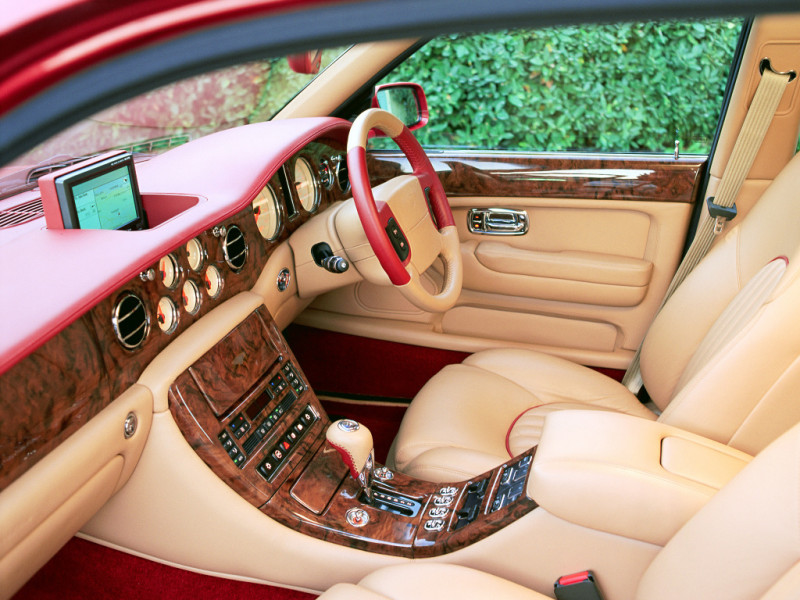
WHAT TO PAY
For a car that would have cost you £150,000 when new at the turn of the century, the Arnage is now near the trough of its price curve, with the cheapest examples advertised at just £15,000. This can rise to as much as five times that figure for lower mileage examples in excellent condition, but Paul says the cars can rack up high mileages as long as they’re looked after. ‘Look for solid service history,’ he advises, adding that there’s no real price differential between BMW and L Series engine variants, at least for nice low-mileage examples.
‘It’s not really the spec that makes a difference to the price,’ says Paul, ‘but the mileage and condition. Earlier cars can look a little dated with their coloured lenses. Lots of owners fit the later clear lenses and bigger wheels to update the looks of the car.’ While this updates the looks, the earlier cars will still be missing the satnav and parking sensors of later models. ‘Like buying any car, the rules of thumb apply – look for service history with condition running alongside it,’ says Paul.
Money no object? You could spend £80,000 on a perfect Arnage Final Series of 2009, which combined the 500bhp T’s engine with the R’s softer suspension, although with 20-inch polished alloy wheels the ride won’t be as compliant as a standard R. But you do get an 1100-watt Naim sound system complete with 10 speakers plus a twin channel sub-woofer arrangement. At the time it was the most powerful stereo fitted to a car – handy if you ever get bored of the sound of that wonderful V8 engine.
There’s a lot to choose from, which would no doubt be a good thing according to that young chap in his whizzy glasses. But when you’re considering several tens of thousands on a large luxury saloon, some expert guidance is handy. What’s Paul’s favourite? ‘Personally I’d go for a 2006-onwards Arnage R,’ he says. ‘The T has 50bhp more, but the split rim alloys give it a harsher ride, and the thinner seats aren’t as comfortable. The R still has plenty of power and it also has the later six-speed gearbox. It just feels more like a gentleman’s Bentley to me.’ Around £35,000 should do it – still remarkable value for a true, blue-blooded bruiser.
Extra legroom of longer Arnage RL is striking Original accessories are nice to have, and a sign of a cared-for car.
Typical earlier Arnage interior, in this case a Green Label car High-performance Arnage T had engine-turned dash panel.
A professional inspection by a specialist is always worthwhile
Cars with LPG conversion exist — if professionally fitted, it can work well. Check that a Red Label really is a Red Label — the badge is easier to change than the engine! Quad headlamp layout arrived in 2005
The two Arnage V8s: BMW 4.4-litre, and right, L-series 6.75-litre
Correct four-wheel alignment perfects the Arnage's road feel Surface rust is no concern, but it's worth looking deeper for corroded brake pipes.
Arnages are heavy and work their brakes and suspension bushes hard — it's worth a careful check.
T-24 was a strictly limited commemorative edition to mark Bentley's 2004 Le Mans win.
Arnage's hand-finished paint is terribly expensive to re-do — to the same standard anyway. The Arnage survived a chaotic birth to become a highly successful model that new owners VW could develop and modernize.

